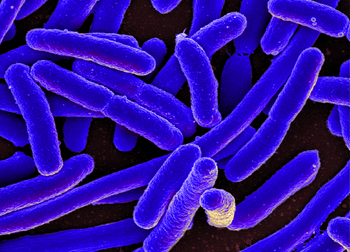By: Adam Friedlander, Specialist, Food Safety and Technical Services, Food Marketing Institute
 On April 11-12, the 40th Annual National Food Policy Conference was held in Washington, D.C. From a food safety perspective, the most inspiring moments came from the breakout panel titled, “Big Data and the Future of Food Safety.” The panel of industry experts discussed how government agencies and public health laboratories are working together to rapidly detect, investigate, and most importantly prevent foodborne outbreaks using a highly-accurate testing procedure called whole genome sequencing (WGS).
On April 11-12, the 40th Annual National Food Policy Conference was held in Washington, D.C. From a food safety perspective, the most inspiring moments came from the breakout panel titled, “Big Data and the Future of Food Safety.” The panel of industry experts discussed how government agencies and public health laboratories are working together to rapidly detect, investigate, and most importantly prevent foodborne outbreaks using a highly-accurate testing procedure called whole genome sequencing (WGS).
Using WGS, a pathogen’s complete DNA code can be uploaded from a food sample to an international, public database called GenomeTrakr, in a matter of minutes. The results are precise data sets that instantaneously link a specific strain of Listeria monocytogenes, for example, back to its original source. WGS has the capability to help us solve more outbreaks, link ill patients to likely food sources, and identify new food sources of Listeria, such as ice cream and caramel apples, by comparing information previously entered in GenomeTrakr with pathogens found in food and/or the environment.
Since 2013, the Food and Drug Administration (FDA) has collaborated with the National Center for Biotechnology Information (NCBI), Centers for Disease Control and Prevention (CDC), European Molecular Biological Laboratory (EMBL), the DNA Databank of Japan (DDBJ), and a network of public health laboratories to collect and store large amounts of genomic and geographical data about foodborne pathogens in GenomeTrakr. The goal for scientists around the world is to identify the complete DNA profile of each strain of pathogenic bacteria, virus and parasite present in foods, such as Listeria, Salmonella, E. coli, Campylobacter and Vibrio to combat foodborne illness.
As we collect more data about foodborne pathogens, we will gain a better understanding of how food becomes adulterated and how to identify the root cause of contamination. WGS’s straightforward, inexpensive and highly-accurate testing procedure is emerging as a gold standard for the future of food safety.
While this technology can provide rapid insight into foodborne pathogens, the entire food industry, from farm to fork, should remain committed to implementing the highest level of good manufacturing practices (GMPs) to prevent contamination.
To learn more about GMPs, such as proper cleaning and sanitation methods, as well as managing incoming ingredients, visit the FMI Listeria Action Plan for Retailers and visit the FMI Center for Retail Food Safety and Defense resource page.
For more food safety information, visit www.FMI.org/FoodSafety.
Photo Credit: Center for Disease Control and Prevention

 Industry Topics address your specific area of expertise with resources, reports, events and more.
Industry Topics address your specific area of expertise with resources, reports, events and more.
 Our Research covers consumer behavior and retail operation benchmarks so you can make informed business decisions.
Our Research covers consumer behavior and retail operation benchmarks so you can make informed business decisions.
 Events and Education including online and in-person help you advance your food retail career.
Events and Education including online and in-person help you advance your food retail career.
 Food Safety training, resources and guidance that help you create a company food safety culture.
Food Safety training, resources and guidance that help you create a company food safety culture.
 Government Affairs work — federal and state — on the latest food industry policy, regulatory and legislative issues.
Government Affairs work — federal and state — on the latest food industry policy, regulatory and legislative issues.
 Get Involved. From industry awards to newsletters and committees, these resources help you take advantage of your membership.
Get Involved. From industry awards to newsletters and committees, these resources help you take advantage of your membership.
 Best practices, guidance documents, infographics, signage and more for the food industry on the COVID-19 pandemic.
Best practices, guidance documents, infographics, signage and more for the food industry on the COVID-19 pandemic.
